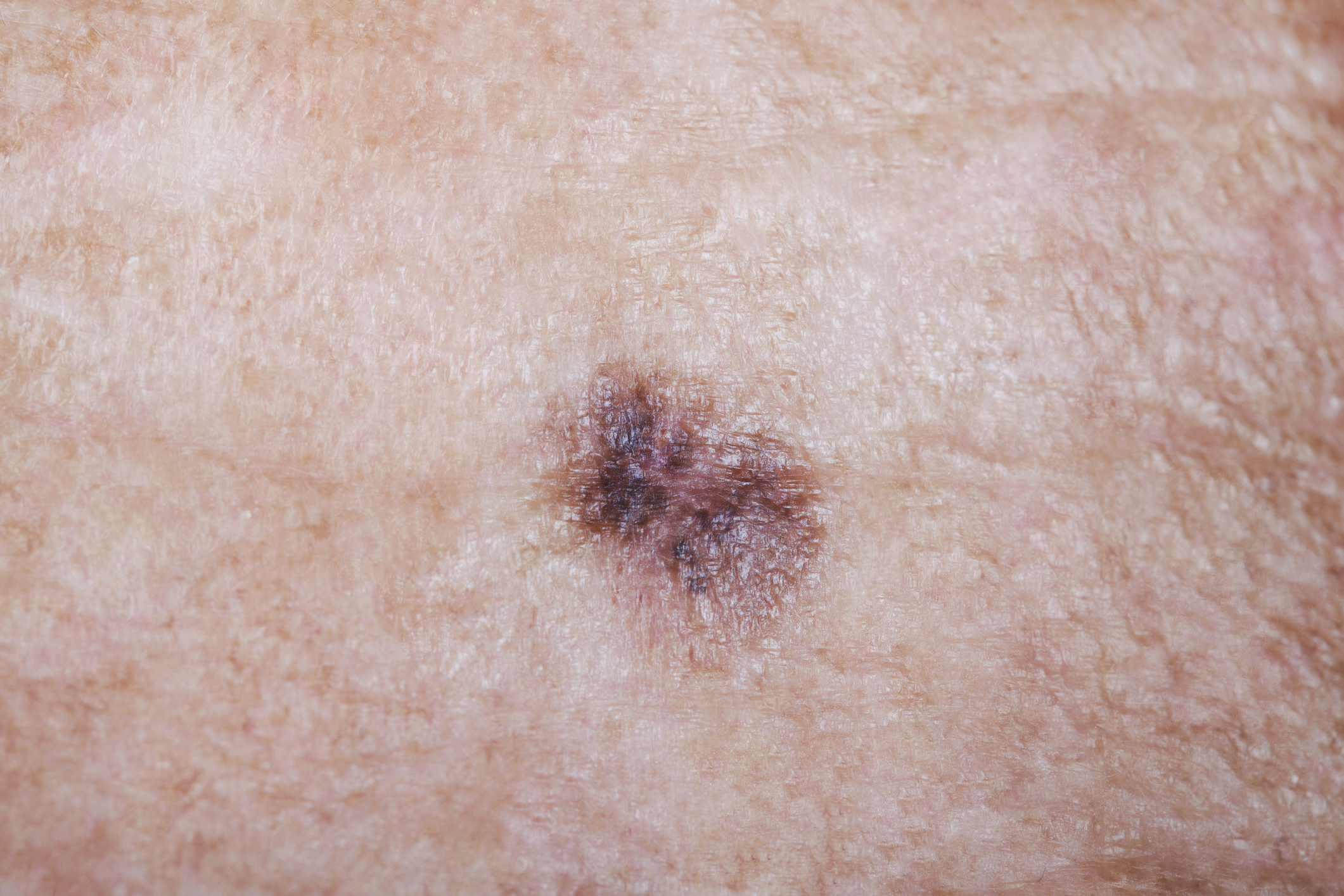Malignant Melanoma in Texas & Louisiana
At Sanova Dermatology, we pride ourselves on delivering top-tier skin care through a combination of experience, education, and advanced technology. Our team of highly experienced physicians are dedicated to providing treatment for malignant melanoma. We have convenient locations across Texas, including Houston, Pflugerville, Austin, Bee Cave, and Dripping Springs. We also serve Louisiana with locations in Metairie, Old Metairie, Uptown New Orleans and Baton Rouge.
Melanoma arises from cells in the skin called melanocytes – these specialized cells produce melanin, the pigment that provides our skin its tone and our hair its color. It can arise in normal skin, or in a mole that changes. Melanoma can even arise in birthmarks or moles present from an early age. Rarely, melanomas can develop in our mouths or eyes. These are usually picked up during eye exams or at the dentist. Very rarely, melanoma can arise in the genital area, GI and GU tract.
Melanoma is not as common as other types of skin cancer. However, the rate of melanoma is steadily increasing.

Who’s at Risk?
Anyone can get melanoma. Melanoma affects individuals of all races and ethnic backgrounds. There are some factors that increase your risk for melanoma:
- A fair complexion with light eyes, blond or ginger hair
- Residing at high altitudes or in sunny regions
- Work or frequently participate in activities outdoors
- Have a history of a blistering sunburn when you were a child
- Frequent tanning
Other risk factors include:
- A history of melanoma in one or more close relatives
- Atypical or dysplastic moles or multiple birthmarks on your skin
Melanoma can be asymptomatic, with no discomfort or pain. A new mole or one that is changing is sometimes all that is observed. Melanoma can sometimes bleed, change in color, or present as a sore that never heals.
The ABCDE’s can help you check your skin for melanoma. A mole or growth with any of these features should be evaluated by your dermatologist.
- A. is for ‘Asymmetry’ – Do your freckles or moles appear uneven? Does one side match the other?
- B. is for ‘Border’ – Do the edges look jagged, irregular or have notches taken out of them?
- C. is for ‘Color’ – One solid color is good. Multiple colors in the same mole is bad.
- D. is for ‘Diameter’ – A mole larger 6mm or bigger than the head of a pencil eraser is cause for concern.
- E. is for ‘Evolution’ – Has the mole been changing? Is it getting bigger, changing shape or color?
Treatment
Early recognition is essential to treating melanoma successfully. Make sure you see your dermatologist every year for a body check, and perform a self-skin exam on a monthly basis. Contact your dermatologist immediately if you find anything suspicious.
Your dermatologist will perform a skin biopsy if they believe one of your moles is atypical. In this procedure, a piece of the mole is removed, processed in a lab, and examined under a microscope.
Occasionally, your doctor might recommend a special procedure to see if your melanoma has spread. A sentinel lymph node biopsy (SLNB) is a procedure that checks to see if the cancer has spread to the lymph nodes. X-rays and/or CT scans may also be ordered to see if the melanoma has spread to other parts of the body.
The mainstay of treatment for melanoma is surgery. The skin cancer needs to be removed completely. Some of the surrounding skin and tissue will also be removed. The amount of surrounding skin removed, or margin required, is dependent on how deep into the skin your cancer has grown. If the SLNB shows that the melanoma has spread to the lymph nodes, the surgeon might also remove these lymph nodes.
Melanoma that has spread to other parts of the body and affects other organs is more difficult to treat. If you have a melanoma that has spread, treatment might involve:
- Chemotherapy to kill and destroy cancer cells.
- Immunotherapy such as interferon or interleukin to stimulate your immune system to fight the cancer.
- Radiation to alleviate discomfort or pain caused by cancer that has spread.
- Surgery to alleviate discomfort or pain associated with the cancer.
Clinical trials are designed for patents with melanomas that do not respond to conventional therapies. Speak to your dermatologist for information on how you might access new therapies that are being studies for this disease.
Your outcome after being diagnosed with melanoma depends on a number of factors. Some melanomas can be cured if caught early.
Deep melanomas or those cancers that have spread to the lymph nodes are more likely to recur after treatment. Melanomas deeper than 4 mm or those that involve the lymph nodes are more likely to spread to other parts of the body.
If you have had melanoma in the past and recovered, you should still examine your skin regularly for changes or suspicious lesions. Once you’ve had melanoma your chance of getting another goes up.
Contact Us
If you would like more information, or if you would like to schedule a consultation with one of our experienced dermatologists, please click here.
